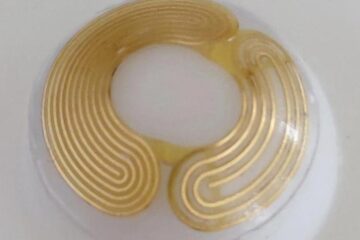Production of highly nuclear-spin polarised liquids for MRI and NMR

This novel method, in combination with the device based on the invention, makes the production of highly nuclear-spin-polarised liquids as a contrast medium for MRI and NMR possible for the first time. To achieve this, liquids with a high preservation of the nuclear polarisation, characterised by the so-called T1 time, are mixed with such liquids which exhibit a low vapour pressure of less than 10^-3 mbar at room temperature (20°C). Surprisingly, it was found that so-called ionic liquids exhibit the desired low vapour pressure and can also be mixed with liquids with a high T1 time. Through suitable mixtures, T1 durations of more than 15 minutes could be achieved with liquids at room temperature. Thus, for this time period, the sensitivity e.g. of determination of biological molecules could be increased by a factor of 100 up to 1,000,000.
After preparation, the liquid, which is able to be nuclear-spin polarised, is transferred ? under the formation of a free fluid-film ? into a nearly conventional vacuum apparatus and irradiated with highly nuclear-spin polarised atoms/ions. After removal from the vacuum apparatus ? and a possible concentration method – based on ambient conditions, a highly nuclear-spin polarised contrast medium is avail-able for the purposes of the MRI or NMR, e.g. as a solvent for biomolecules or as an injectable contrast medium.
Further Information: PDF
TransMIT Gesellschaft für Technologietransfer mbH
Phone: +49 (0)641/943 64-12
Contact
Dr. Peter Stumpf
Media Contact
All latest news from the category: Technology Offerings
Newest articles

NASA selects UF mission to better track the Earth’s water and ice
NASA has selected a team of University of Florida aerospace engineers to pursue a groundbreaking $12 million mission aimed at improving the way we track changes in Earth’s structures, such…

‘Smart’ contact lenses could someday enable wireless glaucoma detection
Most people with early-stage glaucoma don’t know they have it, even though early treatment is key to reducing vision loss. While detecting a subtle increase in eye pressure helps doctors…

New tech may lead to smaller, more powerful wireless devices
Good vibrations… What if your earbuds could do everything your smartphone can do already, except better? What sounds a bit like science fiction may actually not be so far off….

















